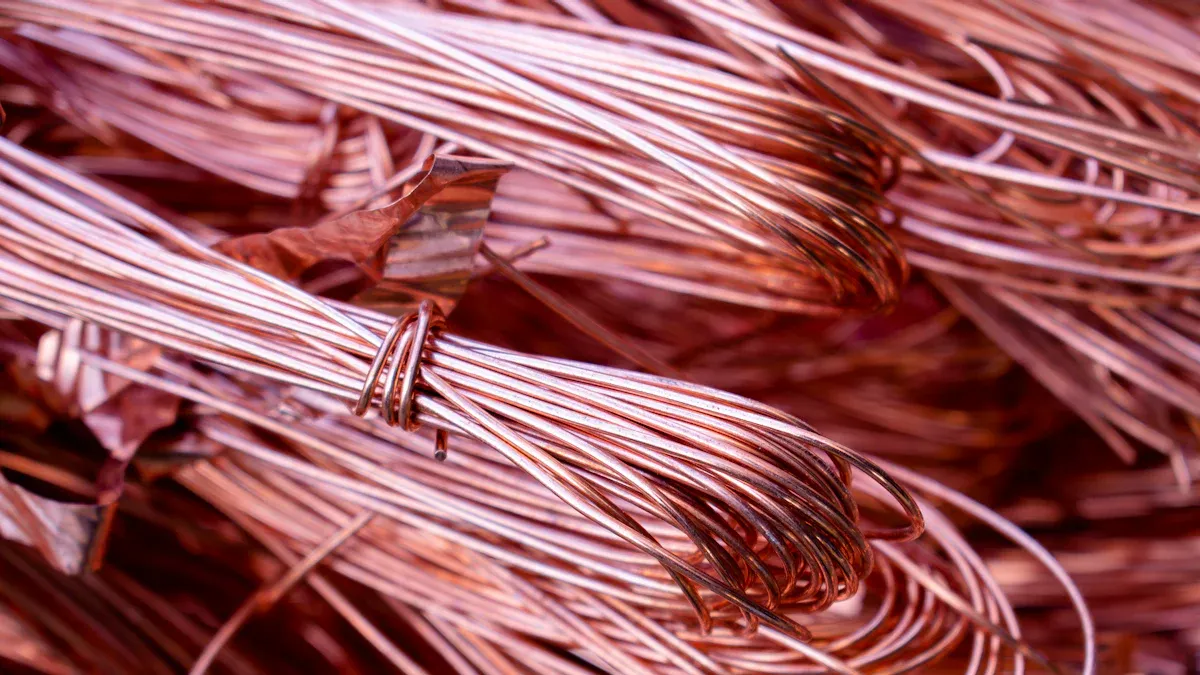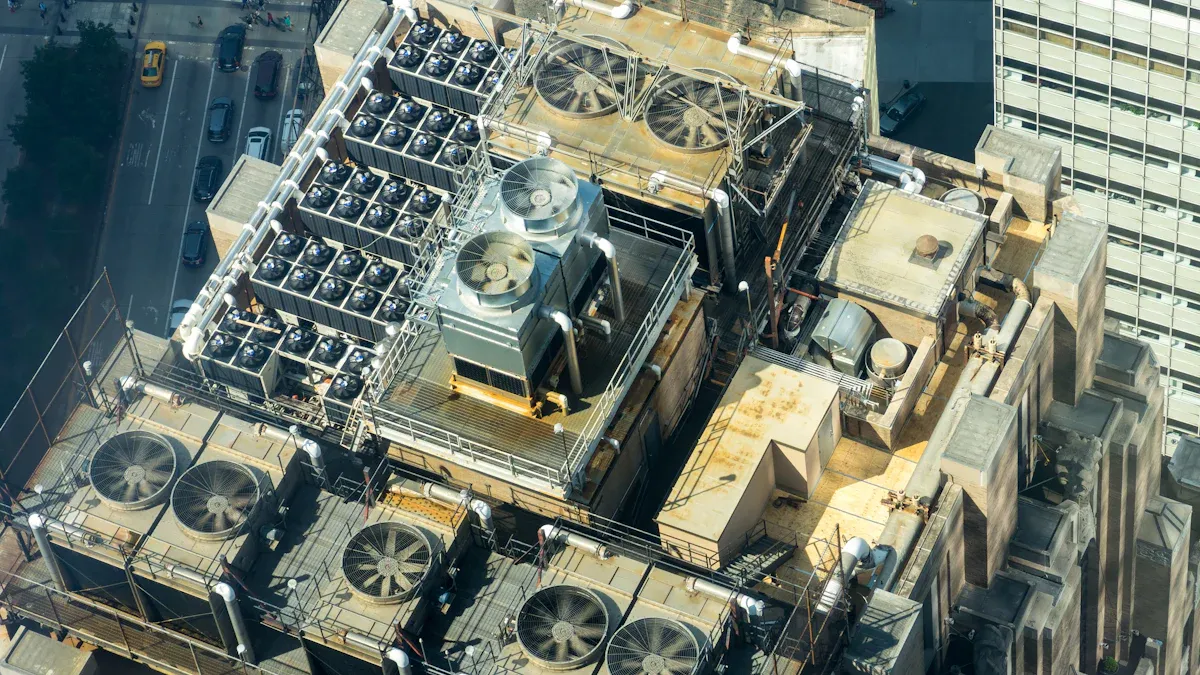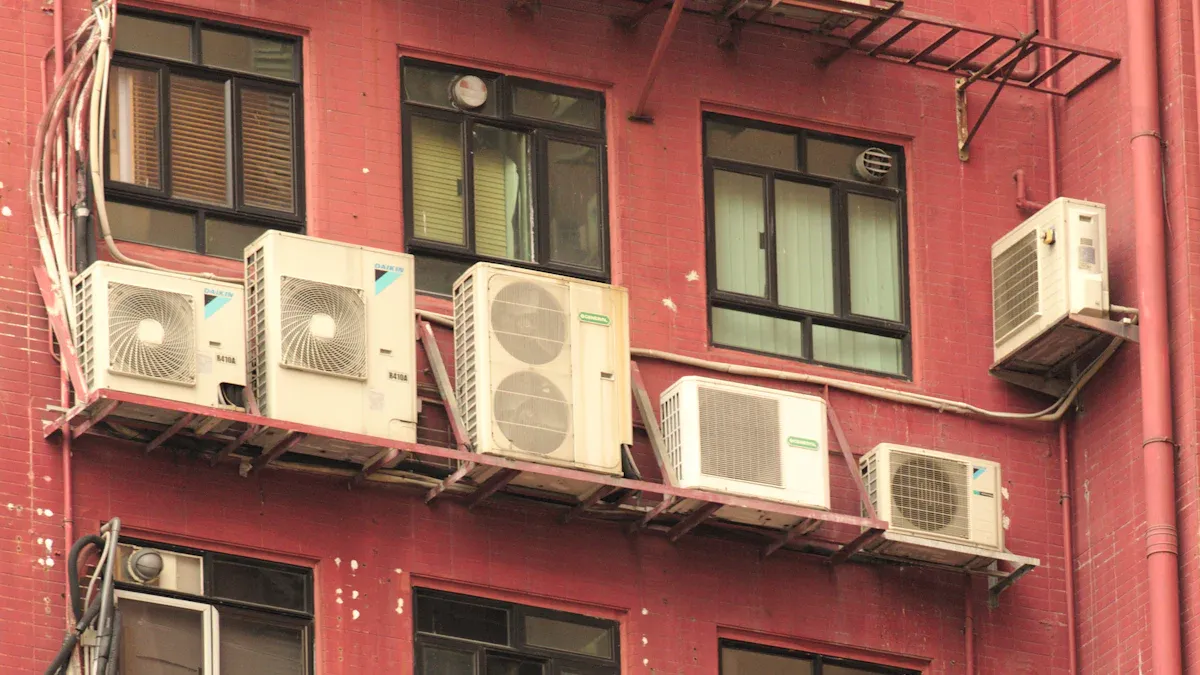How to Choose Wire Tube Condenser Specifications for Commercial Refrigeration?

Selecting the right wire tube condenser is critical for ensuring optimal performance in commercial refrigeration systems. A well-chosen condenser not only enhances cooling efficiency but also minimizes energy consumption, reducing operational costs over time. Key factors such as application requirements, material durability, precise dimensions, and ease of installation play a pivotal role in achieving this balance.
Compatibility with the refrigeration system significantly impacts performance. For instance, studies reveal that poorly designed heat exchangers can reduce heat exchange efficiency by up to 20%, underscoring the importance of design alignment. Similarly, innovations like supersonic spray systems have demonstrated a 5.4 °C reduction in intake temperature, leading to energy savings of up to 14.4%. These examples highlight how tailored specifications can unlock superior results.
Key Takeaways
- Check how much cooling is needed and the product type to pick the right wire tube condenser for your fridge.
- Think about weather conditions like heat and moisture, as they can change how well the condenser works.
- Choose strong materials like copper or steel because they handle heat well and don’t rust easily.
- Make sure it fits your fridge system to stop problems from happening.
- Clean and check it often to make it last longer and work better.
Understanding Application Requirements
Cooling Capacity and System Needs
When selecting a wire tube condenser, I always start by evaluating the cooling capacity required for the application. Commercial refrigeration systems vary widely in their demands, from small beverage coolers to large-scale supermarket freezers. The global commercial refrigeration market is projected to grow from USD 85.6 billion in 2024 to USD 161 billion by 2034, driven by the demand for energy-efficient cooling systems. This growth highlights the importance of tailoring condensers to meet specific cooling needs.
I also consider the type of products being stored. For example, fresh produce requires precise temperature control, while frozen goods demand higher cooling capacities. The food and beverage retail segment, influenced by changing consumer preferences, underscores the need for customized solutions.
Operating Conditions and Environmental Factors
Operating conditions significantly impact condenser performance. I pay close attention to environmental factors such as ambient temperature, pressure, and humidity levels. These parameters dictate how efficiently the system can transfer heat.
| Parameter | Value |
|---|---|
| Ambient Temperature (To) | 25 °C |
| Subcooling Temperature | Up to 5 °C |
| Coefficient of Performance (COP) | Increased from 3.23 to 4.75 |
| Overall Irreversibility | Decreased from 20.87 kW to 11.42 kW |
For instance, a condenser operating in a high-temperature environment must dissipate heat effectively to maintain system efficiency. I always ensure the condenser design aligns with these benchmarks to optimize performance.
System Compatibility and Design Integration
System compatibility is non-negotiable. I prioritize condensers that integrate seamlessly with the refrigeration system's design. Poor compatibility can lead to inefficiencies and increased energy consumption. The growth of retail sectors like supermarkets and convenience stores has amplified the demand for tailored refrigeration solutions.
Wire tube condensers must align with the system's layout and cooling requirements. I recommend consulting with experts to ensure the condenser fits both the physical and operational parameters of the system. This approach guarantees optimal functionality and long-term reliability.
Material Selection for Wire Tube Condensers

Durability and Corrosion Resistance
When selecting materials for a wire tube condenser, I prioritize durability and resistance to corrosion. These factors directly impact the lifespan and performance of the condenser, especially in demanding commercial refrigeration environments. To ensure reliability, I rely on standardized testing methods that evaluate material properties under various conditions.
| Test Method | Description |
|---|---|
| ASTM G61 | Corrosion testing in various environments. |
| ASTM G71 | Galvanic corrosion testing. |
| ASTM G44 | Alternate immersion testing. |
| ASTM B845 | Mixed flowing gas environmental pollutant test. |
| ASTM B117 | Salt spray (fog) test, though noted for its limitations. |
These tests provide valuable insights into how materials perform in real-world applications. For example, salt spray tests simulate exposure to corrosive environments, helping me identify materials that can withstand harsh conditions.
Common Materials and Their Benefits
The choice of material significantly influences the efficiency and cost-effectiveness of a wire tube condenser. I often evaluate the following materials based on their unique advantages:
- Steel Tube Condensers: These are durable and strong, making them ideal for high-temperature applications. They offer excellent corrosion resistance and are more affordable initially, which makes them a popular choice for budget-conscious projects.
- Copper Tube Condensers: Copper stands out for its superior heat transfer capabilities. It is an excellent conductor of heat, enabling quick cooling. Its malleability allows for flexible designs, and while the initial cost may be higher, copper often delivers greater long-term savings.
By understanding these benefits, I can select the material that best aligns with the specific requirements of the refrigeration system.
Environmental and Operational Considerations
Environmental and operational factors also play a crucial role in material selection. I always consider the following aspects to ensure optimal performance and sustainability:
- The use of refrigerants like R600a enhances the coefficient of performance (COP) while reducing environmental impact.
- Energy efficiency improves with advanced technologies such as Thermoelectric Generators (TEGs) and multiple evaporators.
- Integrating Phase Change Materials (PCMs) minimizes the need for constant compressor operation, contributing to sustainability.
These considerations not only improve the efficiency of the wire tube condenser but also align with global efforts to reduce the environmental footprint of refrigeration systems.
Dimensions and Structural Design

Wire Diameter and Length Specifications
When selecting a wire tube condenser, I always pay close attention to wire diameter and length. These dimensions directly influence the heat transfer efficiency and overall performance of the condenser. A well-optimized design ensures maximum surface area for heat exchange while maintaining structural integrity. Computational Fluid Dynamics (CFD) modeling has shown that dividing the geometry into smaller sections and considering geometric symmetries can closely align designs with industrial requirements. This approach not only enhances heat transfer but also reduces computational load during the design phase.
To achieve optimal performance, I recommend analyzing multiple geometric parameters. For instance, studies utilizing the OMOPSO algorithm have identified eight critical parameters that maximize heat transfer while minimizing the heat exchange area. This balance is essential for achieving high efficiency without unnecessary material usage. The results speak for themselves: a 4.7% higher coefficient of performance, an 8.2% lower water pressure drop, and a 4.68% reduction in compressor power consumption.
Tube Spacing and Heat Dissipation
Tube spacing plays a pivotal role in determining the heat dissipation efficiency of a wire tube condenser. I always ensure that the ratio between transverse and longitudinal tube spacing is optimized. This balance minimizes air pressure drop while maximizing heat transfer performance. Research on liquid-vapor separation plate condensers highlights how proper tube spacing enhances heat exchange by maintaining an annular flow. Additionally, strategically placed drain holes at intervals improve liquid drainage, further boosting efficiency.
The arrangement of tubes also impacts airflow and heat dissipation. Designs that expose more surface area per unit length significantly enhance the heat transfer coefficient. This improvement ensures that the condenser operates efficiently, even under demanding conditions.
Space Constraints and Installation Feasibility
Space constraints often dictate the structural design of a wire tube condenser. I always consider the available installation space to ensure the condenser fits seamlessly into the refrigeration system. Compact designs are particularly valuable for applications like beverage coolers and medical refrigerators, where space is limited. However, these designs must not compromise on performance.
I recommend working closely with system designers to align the condenser's dimensions with the overall layout. This collaboration ensures that the condenser not only fits physically but also integrates functionally with the system. Proper planning during the design phase prevents installation challenges and ensures long-term reliability.
Evaluating Efficiency and Cost
Heat Transfer Performance Metrics
When evaluating the efficiency of a wire tube condenser, I focus on heat transfer performance metrics. These metrics provide a clear picture of how effectively the condenser can transfer heat, which directly impacts the refrigeration system's overall performance. For instance, I often rely on methodologies like two-phase heat transfer measurements to assess the efficiency of new refrigerants and blends. Computational intelligence tools also play a vital role in optimizing condenser designs for better performance.
| Performance Metrics/Methodologies | Description |
|---|---|
| Characterization of novel refrigerants | Evaluates the performance potential of new refrigerants in refrigeration systems. |
| Two-phase heat transfer measurements | Measures heat transfer efficiency for new generation refrigerants and blends. |
| Automated fault detection | Develops methods for diagnosing issues in air conditioners and heat pumps. |
| Computational intelligence tools | Optimizes designs of components and systems for better efficiency. |
| Laboratory measurements and simulations | Conducts system studies to assess overall performance in controlled environments. |
These metrics allow me to identify areas for improvement and ensure the condenser operates at peak efficiency.
Balancing Cost with Long-Term Value
Cost is always a critical factor in selecting a wire tube condenser, but I never overlook the importance of long-term value. A thorough cost-benefit analysis often reveals surprising insights. For example, a three-phase direct contact condenser has a capital cost that is 30 times lower than traditional surface condensers. This significant cost reduction, combined with its superior heat transfer efficiency, makes it an excellent choice for many applications.
I also consider the financial implications of maintenance and energy efficiency. Regular upkeep and the use of energy-efficient technologies can significantly enhance the condenser's lifespan and reduce operational costs. By focusing on long-term value rather than just initial expenses, I ensure that the refrigeration system remains cost-effective over time.
Comparing Models and Industry Standards
Comparing different condenser models and aligning them with industry standards is essential for making an informed decision. I often use tools like cost calculators to weigh the short-term costs of repairs against the long-term benefits of replacement. This approach helps me identify the most economical option without compromising performance.
- A cost-benefit analysis highlights the advantages of investing in energy-efficient models.
- Maintenance practices and upgrades can extend the lifespan of the condenser.
- Industry standards ensure that the selected model meets safety and performance benchmarks.
By carefully evaluating these factors, I can select a condenser that delivers optimal performance while adhering to budgetary constraints.
Installation and Maintenance Guidelines
Proper Installation for Optimal Functionality
Proper installation ensures that a wire tube condenser operates at peak efficiency. I always follow a systematic approach to achieve this. Before installation, I verify the model, voltage, phase, and refrigerant type to ensure compatibility with the refrigeration system. Selecting a serviceable location that can support the unit's weight is equally important.
During installation, I focus on precise connections. Refrigerant lines must be properly piped to maintain good oil return and minimize pressure drops. Insulating all piping prevents excessive superheat and condensation. Leak checks are essential before insulation to avoid operational issues later. I also recommend leveling the unit and connecting refrigerant gauges to test operational settings. These steps ensure the condenser functions optimally from the start.
Tip: Familiarize yourself with the wiring diagram and installation manual to avoid errors during setup.
Maintenance Practices for Longevity
Regular maintenance is critical for extending the lifespan of a wire tube condenser. I prioritize cleaning and inspections to prevent breakdowns. Cleaning the A/C coil in spring helps maintain efficiency. Inspecting hoses for wear and securing connections prevents leaks. I also check for rust or corrosion caused by condensate leaks, which can compromise the unit's durability.
Scheduled inspections allow me to detect issues early. For example, monitoring refrigerant levels and conducting pressure checks ensures consistent performance. Following manufacturer guidelines for cleaning and maintenance helps optimize heat transfer and reduces the risk of system failures.
Note: Implementing a monitoring schedule not only improves efficiency but also minimizes energy wastage.
Adapting to Operational and Environmental Changes
Adapting to changing operational and environmental conditions is essential for maintaining system performance. I rely on proactive strategies to address these challenges. For instance, technological innovations help mitigate the effects of climate change and resource depletion. Revisiting planning frameworks periodically ensures that the system remains aligned with updated climate data and operational needs.
| Adaptation Strategy | Description |
|---|---|
| Technological Innovations | Vital for addressing environmental challenges like climate change and resource depletion. |
| Proactive Adaptation Initiatives | Changes to policies and operations that yield long-term benefits. |
| Monitoring and Evaluation | Processes for assessing the impact of adaptation measures and identifying areas for improvement. |
By implementing these strategies, I ensure that the wire tube condenser continues to perform efficiently, even under evolving conditions. Early action and regular evaluations are key to long-term success.
Choosing the right wire tube condenser is essential for achieving optimal performance in commercial refrigeration systems. I always emphasize evaluating application requirements, material durability, dimensions, efficiency, and installation feasibility. These factors ensure the condenser aligns with the system's needs and delivers long-term reliability.
To make the best decision, I recommend consulting industry experts and prioritizing quality over cost. Ensuring compatibility with the refrigeration system is equally important. A well-chosen condenser not only enhances cooling efficiency but also reduces energy consumption, saving costs in the long run.
Pro Tip: Always verify the condenser's specifications against your system's requirements to avoid performance issues.
FAQ
What is the primary purpose of a wire tube condenser in refrigeration systems?
The wire tube condenser removes heat from the refrigeration system, ensuring efficient cooling. It transfers heat from the refrigerant to the surrounding air, maintaining the desired temperature for stored products.
How do I determine the right size for a wire tube condenser?
I recommend evaluating the cooling capacity of your refrigeration system. Consider factors like the system's heat load, available space, and operational requirements to select the appropriate size.
Which material is best for wire tube condensers?
Copper and steel are common choices. Copper offers excellent heat transfer and flexibility, while steel provides durability and cost-effectiveness. I choose based on the system's needs and environmental conditions.
How often should I maintain a wire tube condenser?
Regular maintenance is essential. I suggest cleaning and inspecting the condenser every three to six months. This practice prevents efficiency loss and extends the unit's lifespan.
Can a wire tube condenser work with all refrigerants?
Not all condensers are compatible with every refrigerant. I always verify the refrigerant type and ensure the condenser matches the system's specifications for optimal performance.
Tip: Consult the manufacturer's guidelines to confirm compatibility and avoid performance issues.


















